Shut Down Rikers And The Mayor’s Jail Plan, Community Demands
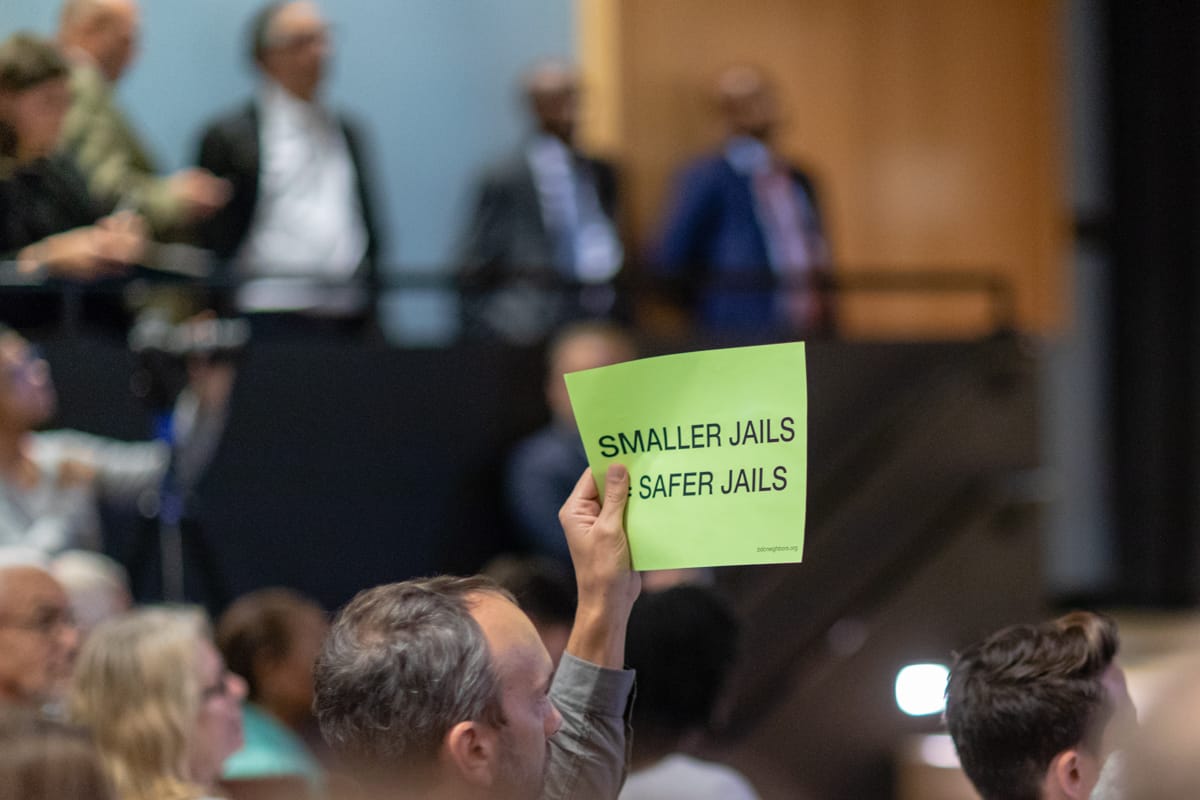
PARK SLOPE – The diverse group of Brooklynites packed into the auditorium of PS 133 Thursday night shared two opinions—they all wanted both Rikers Island and the Mayor’s borough-based jail plan shut down.
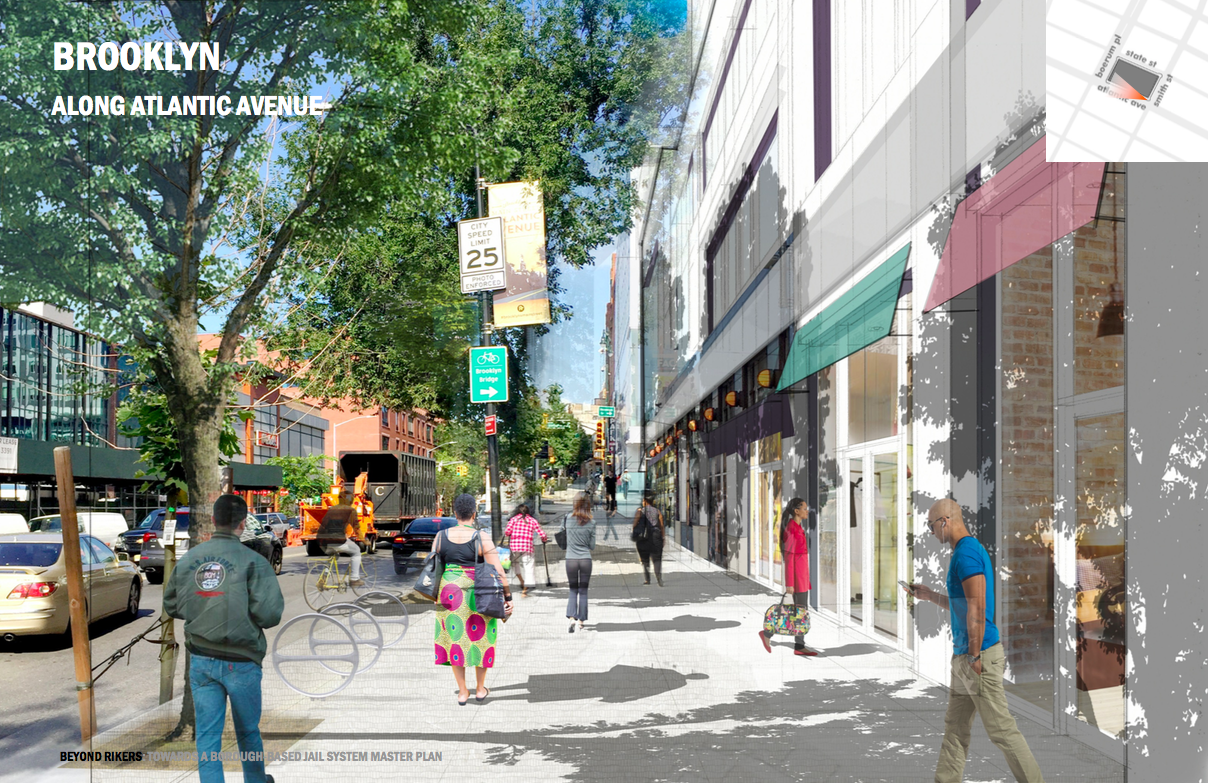
Mayor Bill de Blasio committed in 2017 to close the jails on Rikers Island by 2027 and replace them with four new/renovated “modern and humane” borough-based jails in Brooklyn, the Bronx, Manhattan, and Queens.
The plan includes demolishing the existing 800-bed Brooklyn Detention Center at 275 Atlantic Avenue and replacing it with a 1,510-bed facility with ground-floor retail, community space, and parking. The floor area ratio (FAR) for the new building would increase from 3.5 to 20, allowing the currently 216 feet tall building to soar up to 430 feet. The “community-based” centers will make the jail system “fairer, safer, and more efficient,” according to the city.

A City Environmental Quality Review (CEQR) is legally required before the “Beyond Rikers” plan can proceed. The CEQR requires that four scoping meetings/public hearings be held to allow community members to provide feedback on the draft scope of work. Thursday’s event in Brooklyn was the first of the four meetings.
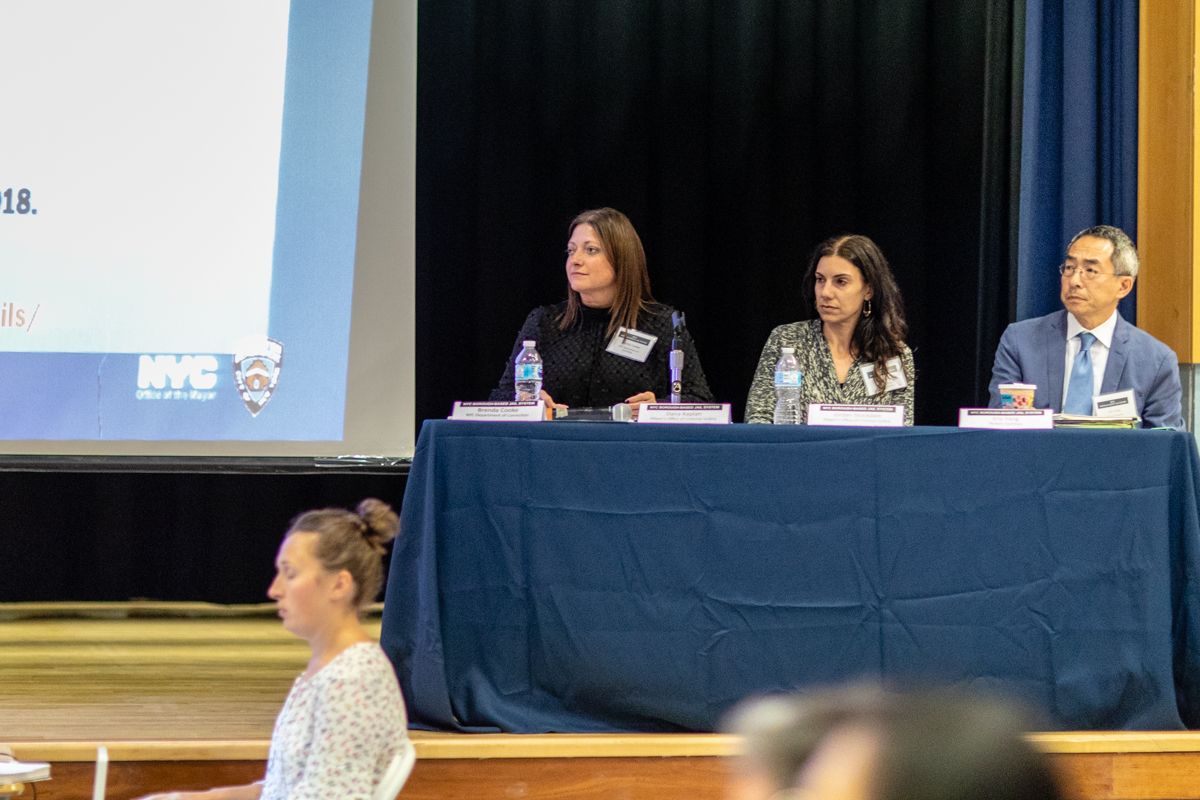
Representatives from the NYC Department of Correction, the Mayor’s Office of Criminal Justice, and the architectural firm Perkins Eastman presented the expansion plans for the Brooklyn Detention Center Thursday night to an impassioned group. Opposition to the expanded facility came from locals upset by the lack of engagement from the city prior to releasing the scope of work, nearby residents concerned about the impact the “gargantuan” jail would have on the neighborhood, and activists who want Rikers closed and no new jails built.
“I think that we can very safely say that we should not be considering going from 800 people in a building to 1,500 people because that seems to defy the actual intent and mission of what you’re talking about doing—making a smaller system more efficient and making it better,” Senator Velmanette Montgomery said at the start of the three-hour meeting.
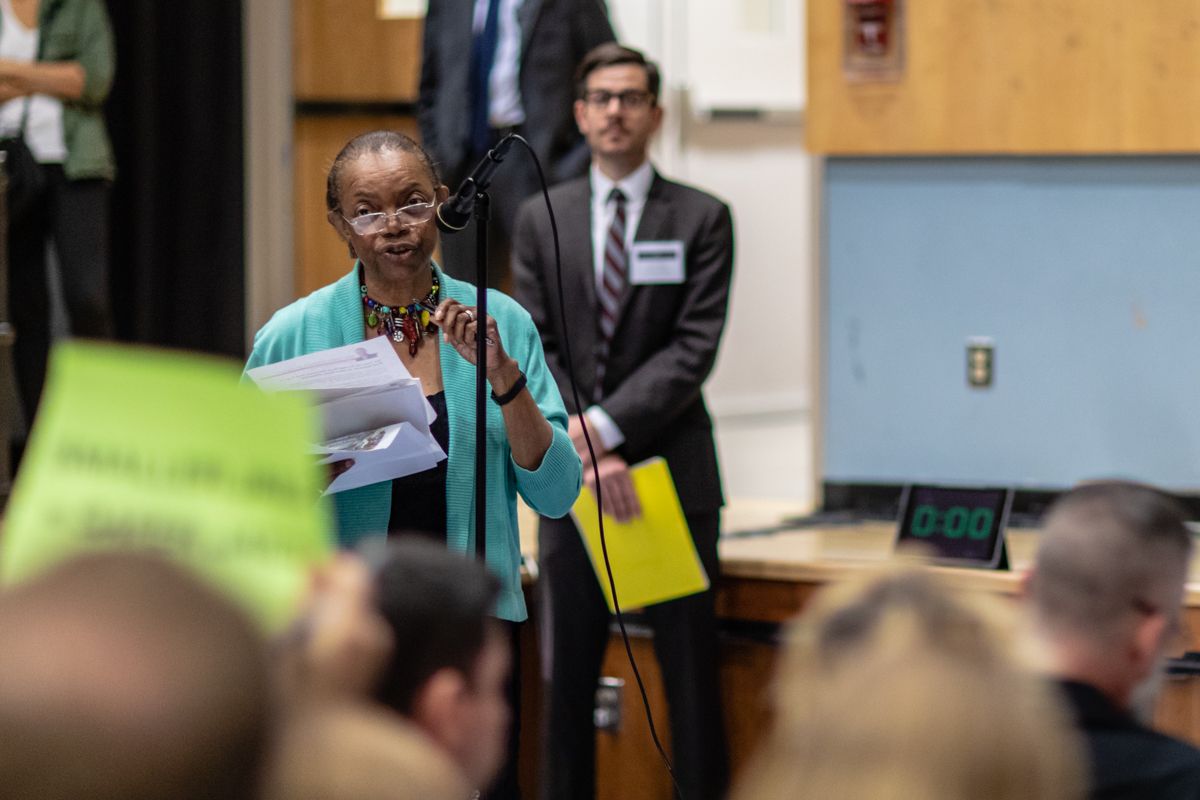
“I’m happy to see that the constituents have come out to make their voices heard. That’s what we need,” she added noting that she would have preferred that community engagement occurred earlier in the process. Montgomery, Senator Brian Kavanaugh, and Assembly Member Jo Anne Simon have penned a letter to the city requesting that the current scope of work be withdrawn and a new one developed that considers and implements the feedback collected from the public scoping meetings.
“That is basically why we are here. It’s to support what we believe is the community’s desire to be engaged in the discussion around actually improving what goes on in any facility so that we can reduce the violence, reduce hopefully the need for more and more and more cells, because we’re going to build a criminal justice system that incorporates alternatives to incarceration along with a more efficient and better system of jails,” Montgomery said.
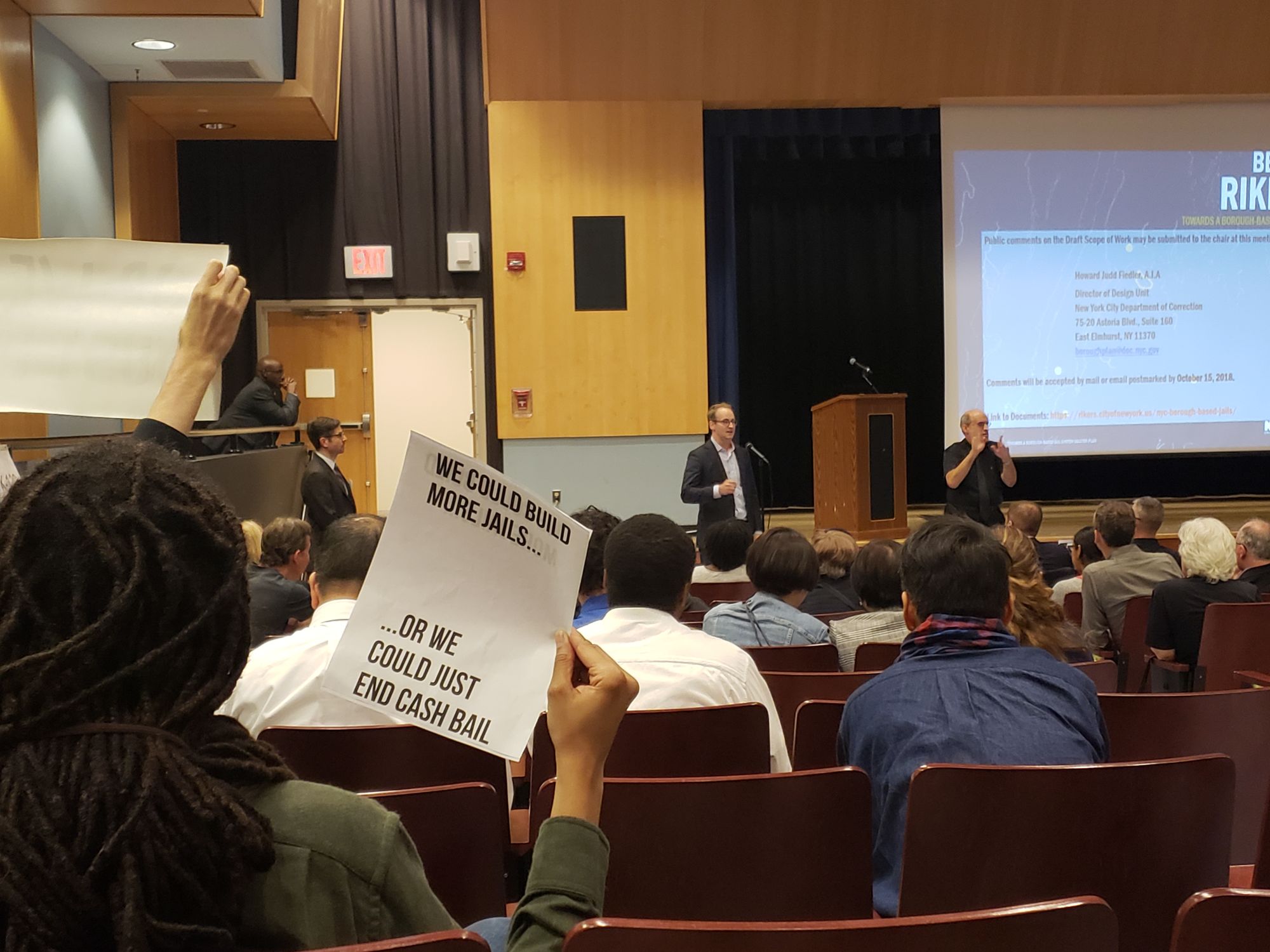
Following statements by elected officials, more than 30 attendees were given three minutes to voice their concerns during the three hour meeting—another 20 left before their allotted time was called. Several neighbors of the facility voiced their disappointment in the lack of community engagement, the proposed building’s size, and the city’s apparent rush with the project.
“We regard this hearing as illegitimate because the city’s planning process is fundamentally flawed,” said Peter Bray, Executive Director of Brooklyn Heights Association. “The administration presented its plan as a fait accompli by excluding the affected communities from any prior engagement. We also believe the process is being driven by political expediency, not by the imperative to create the very best criminal justice system and to change the culture of that system.”
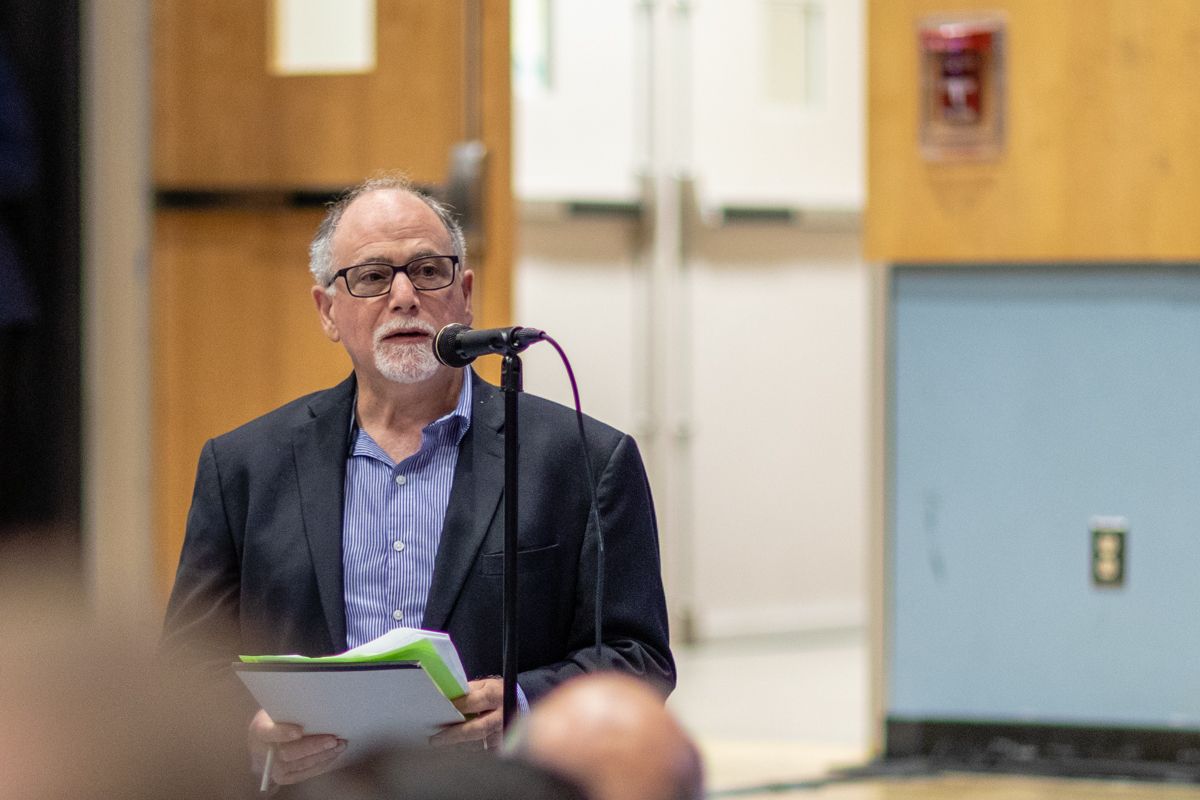
The overall plan also includes expediting the Uniform Land Use Review Procedure (ULURP) by combining the proposed changes to the Brooklyn, Bronx, Manhattan, and Queens facilities into one ULURP package which entails reviews and votes from the local Community Boards, Borough Presidents, City Planning Commission, and City Council.
“No alternatives are being considered, and according to this process, you must accept this density or Rikers stays open,” said Justin, a Smith Street resident. “The cake is in the oven and the city is here to only ask you what color you would like the frosting. That is the level of public engagement they are offering us…. Let us not make a monument to incarceration towering over our city,” he added.
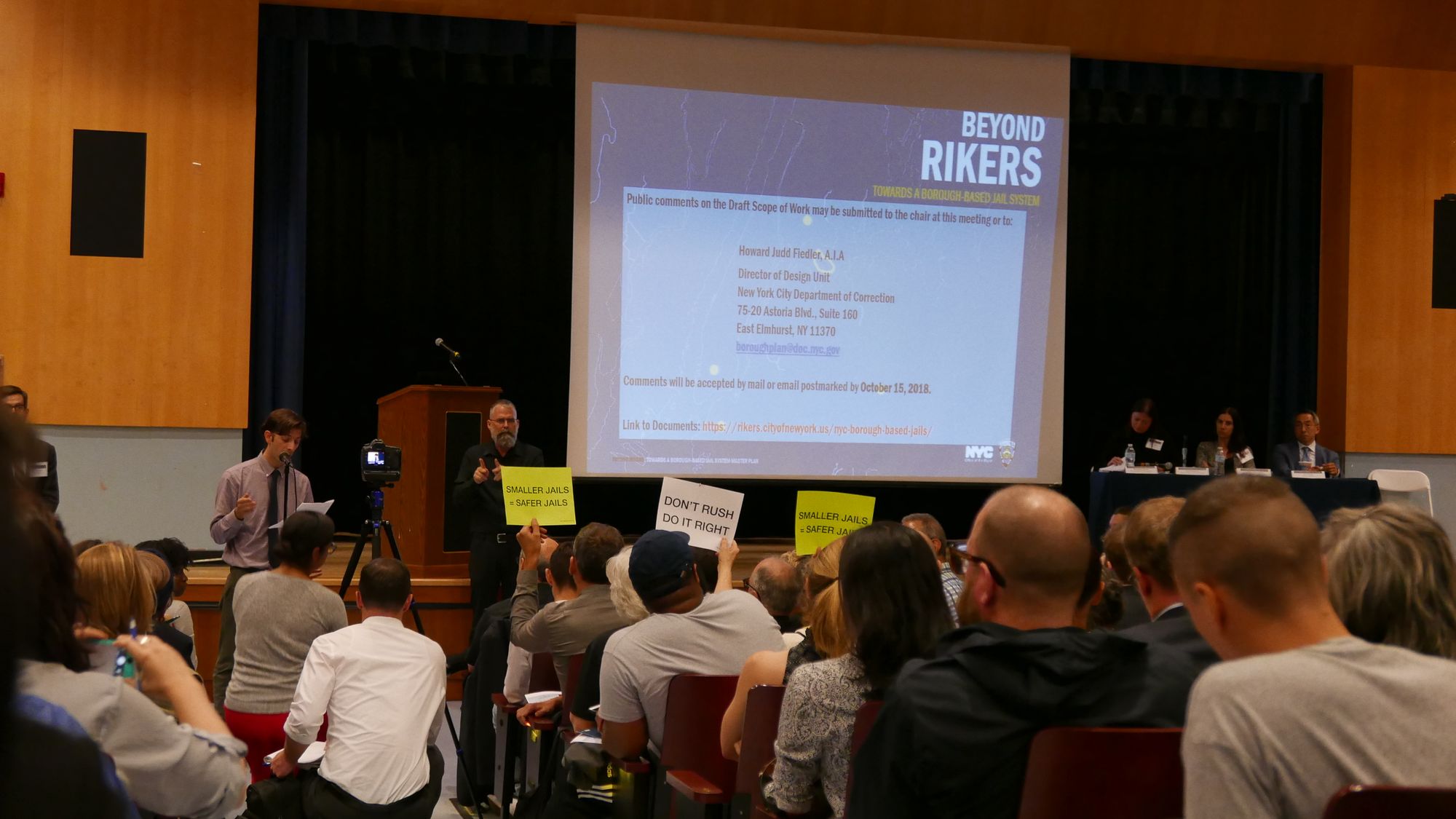
The large contingent from the No New Jails campaign booed Council Member Stephen Levin off the mic as he expressed his support for the Brooklyn jail expansion. Levin, whose District 33 covers the site where the prison is located, tried reading a statement about how “modern, humane” sites would bring inmates closer to their families and to courthouses as well as bring down the prison population, but was cut short by shouts from the audience.
Many advocates at the meeting were vocal about not wanting Rikers or the new facilities, stressing the need to repair the justice system, provide mental healthcare services, and focus on the communities most impacted by incarceration.
“I believe that before this city builds a bigger house they need to clean house with the Department of Correction,” said one Smith Street resident.

“Incarceration does not eliminate violence, it perpetuates it,” said a member of No New Jails. She noted that almost 80% of the people incarcerated at Rikers are in pre-trial detention because they cannot afford bail, and 70% of them are accused of non-violent crimes. “People incarcerated in New York City do not pose a threat to communities, but jails pose a threat to them,” she said to cheers.
“People incarcerated in NYC jails are our neighbors, our community members, our families, our friends, and our loved ones. They are our 16- and 17-year-old children,” she added. “I oppose the construction of new jails because I want my community members back in my community, not in cages.”
Brandon Holmes, Manager of the Close Rikers campaign at Justice Leadership USA, provided city officials with detailed ways on how to fix the broken criminal justice system—”A vast majority of the population should be at home with a fair shot at justice and unfettered access to services that address the challenges of underfunded and over-criminalized communities.”
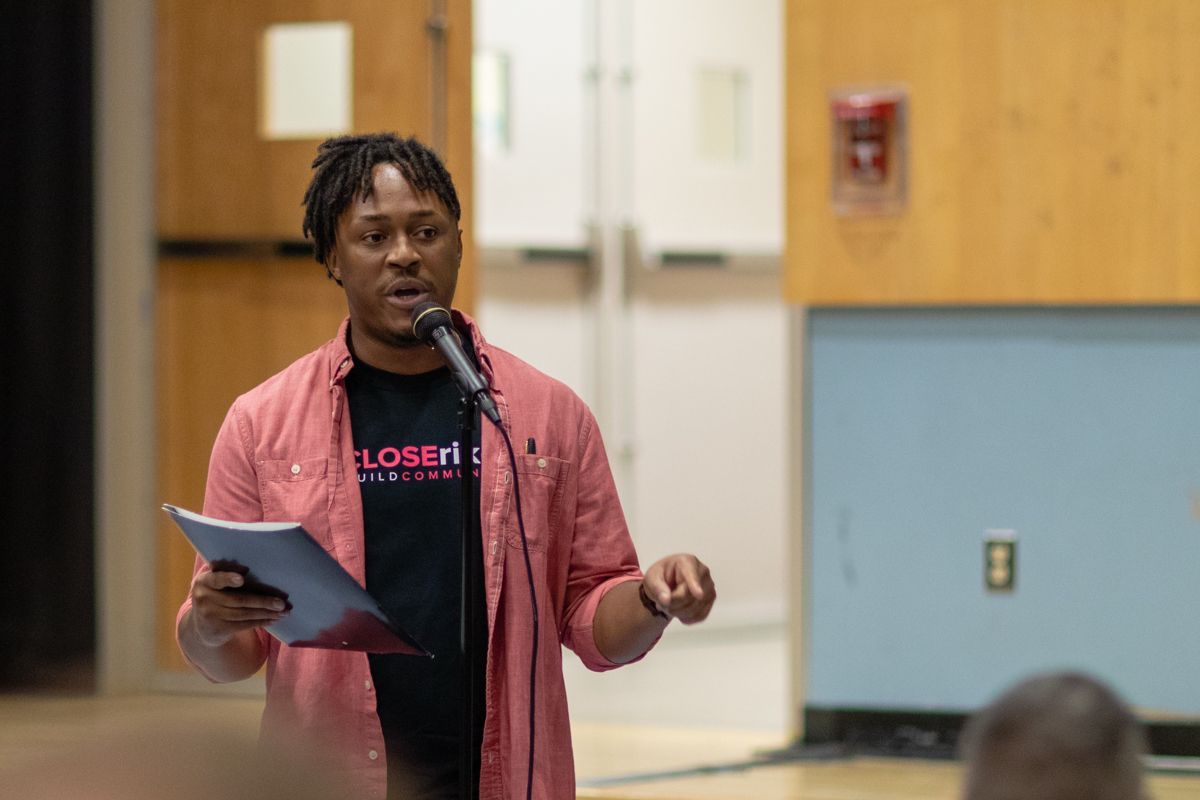
“To achieve this, the administration and City Council must end Broken Windows policing, decriminalize all victimless crimes in New York City, including marijuana possession and turnstile jumping for all New Yorkers,” he said.
“While this administration currently is focusing on design, we need them to focus on services, programming, and our communities beyond these facilities,” Holmes continued. “The city’s new system must eliminate the Department of Correction and be operated by an agency focused on health and wellness of community members both inside and outside of these facilities.”
Darren, a “survivor” of Rikers, echoed the other speakers, stating, “I became a part of the Close Rikers campaign because I believe the campaign slogan, which is ‘Close Rikers, Build Communities’.” He noted his lack of faith in the de Blasio administration by adding, “I believe that if the Mayor is really serious about building communities and investing in these communities, he could do that right now.”

“What is the guarantee that we will not end up with four new jails that are just miniature Rikers?” asked Kei Williams, an organizer for Black Lives Matter, NYC Chapter, and a member of No New Jails.
“One thing that we all agree upon tonight as community members here is that we must close Rikers, we know that, but we cannot allow the city to railroad us into creating four new jails,” Williams insisted. “Let’s close Rikers in a way that is safe for every single New Yorker.”
For more information on the Mayor’s “Beyond Rikers” plan, go to rikers.cityofnewyork.us.
Comments on the draft scope of work can be submitted to the NYC Department of Correction by Monday, October 15:
Howard Judd Fiedler, AIA
Director of Design Unit
New York City Department of Correction
75-20 Astoria Boulevard, Suite 160
East Elmhurst, NY 11370
boroughplan@doc.nyc.gov



